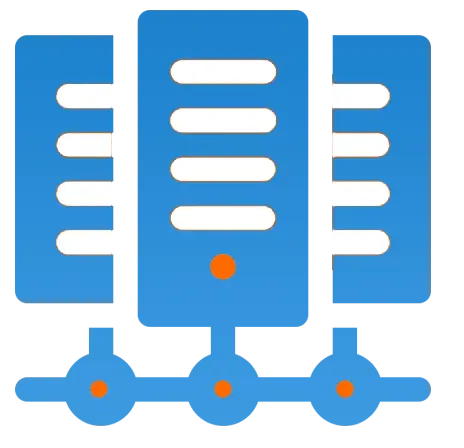Get 69% Off on Cloud Hosting : Claim Your Offer Now!
- Products
-
Compute
Compute
- Predefined TemplatesChoose from a library of predefined templates to deploy virtual machines!
- Custom TemplatesUse Cyfuture Cloud custom templates to create new VMs in a cloud computing environment
- Spot Machines/ Machines on Flex ModelAffordable compute instances suitable for batch jobs and fault-tolerant workloads.
- Shielded ComputingProtect enterprise workloads from threats like remote attacks, privilege escalation, and malicious insiders with Shielded Computing
- GPU CloudGet access to graphics processing units (GPUs) through a Cyfuture cloud infrastructure
- vAppsHost applications and services, or create a test or development environment with Cyfuture Cloud vApps, powered by VMware
- Serverless ComputingNo need to worry about provisioning or managing servers, switch to Serverless Computing with Cyfuture Cloud
- HPCHigh-Performance Computing
- BaremetalBare metal refers to a type of cloud computing service that provides access to dedicated physical servers, rather than virtualized servers.
-
Storage
Storage
- Standard StorageGet access to low-latency access to data and a high level of reliability with Cyfuture Cloud standard storage service
- Nearline StorageStore data at a lower cost without compromising on the level of availability with Nearline
- Coldline StorageStore infrequently used data at low cost with Cyfuture Cloud coldline storage
- Archival StorageStore data in a long-term, durable manner with Cyfuture Cloud archival storage service
-
Database
Database
- MS SQLStore and manage a wide range of applications with Cyfuture Cloud MS SQL
- MariaDBStore and manage data with the cloud with enhanced speed and reliability
- MongoDBNow, store and manage large amounts of data in the cloud with Cyfuture Cloud MongoDB
- Redis CacheStore and retrieve large amounts of data quickly with Cyfuture Cloud Redis Cache
-
Automation
Automation
-
Containers
Containers
- KubernetesNow deploy and manage your applications more efficiently and effectively with the Cyfuture Cloud Kubernetes service
- MicroservicesDesign a cloud application that is multilingual, easily scalable, easy to maintain and deploy, highly available, and minimizes failures using Cyfuture Cloud microservices
-
Operations
Operations
- Real-time Monitoring & Logging ServicesMonitor & track the performance of your applications with real-time monitoring & logging services offered by Cyfuture Cloud
- Infra-maintenance & OptimizationEnsure that your organization is functioning properly with Cyfuture Cloud
- Application Performance ServiceOptimize the performance of your applications over cloud with us
- Database Performance ServiceOptimize the performance of databases over the cloud with us
- Security Managed ServiceProtect your systems and data from security threats with us!
- Back-up As a ServiceStore and manage backups of data in the cloud with Cyfuture Cloud Backup as a Service
- Data Back-up & RestoreStore and manage backups of your data in the cloud with us
- Remote Back-upStore and manage backups in the cloud with remote backup service with Cyfuture Cloud
- Disaster RecoveryStore copies of your data and applications in the cloud and use them to recover in the event of a disaster with the disaster recovery service offered by us
-
Networking
Networking
- Load BalancerEnsure that applications deployed across cloud environments are available, secure, and responsive with an easy, modern approach to load balancing
- Virtual Data CenterNo need to build and maintain a physical data center. It’s time for the virtual data center
- Private LinkPrivate Link is a service offered by Cyfuture Cloud that enables businesses to securely connect their on-premises network to Cyfuture Cloud's network over a private network connection
- Private CircuitGain a high level of security and privacy with private circuits
- VPN GatewaySecurely connect your on-premises network to our network over the internet with VPN Gateway
- CDNGet high availability and performance by distributing the service spatially relative to end users with CDN
-
Media
-
Analytics
Analytics
-
Security
Security
-
Network Firewall
- DNATTranslate destination IP address when connecting from public IP address to a private IP address with DNAT
- SNATWith SNAT, allow traffic from a private network to go to the internet
- WAFProtect your applications from any malicious activity with Cyfuture Cloud WAF service
- DDoSSave your organization from DoSS attacks with Cyfuture Cloud
- IPS/ IDSMonitor and prevent your cloud-based network & infrastructure with IPS/ IDS service by Cyfuture Cloud
- Anti-Virus & Anti-MalwareProtect your cloud-based network & infrastructure with antivirus and antimalware services by Cyfuture Cloud
- Threat EmulationTest the effectiveness of cloud security system with Cyfuture Cloud threat emulation service
- SIEM & SOARMonitor and respond to security threats with SIEM & SOAR services offered by Cyfuture Cloud
- Multi-Factor AuthenticationNow provide an additional layer of security to prevent unauthorized users from accessing your cloud account, even when the password has been stolen!
- SSLSecure data transmission over web browsers with SSL service offered by Cyfuture Cloud
- Threat Detection/ Zero DayThreat detection and zero-day protection are security features that are offered by Cyfuture Cloud as a part of its security offerings
- Vulnerability AssesmentIdentify and analyze vulnerabilities and weaknesses with the Vulnerability Assessment service offered by Cyfuture Cloud
- Penetration TestingIdentify and analyze vulnerabilities and weaknesses with the Penetration Testing service offered by Cyfuture Cloud
- Cloud Key ManagementSecure storage, management, and use of cryptographic keys within a cloud environment with Cloud Key Management
- Cloud Security Posture Management serviceWith Cyfuture Cloud, you get continuous cloud security improvements and adaptations to reduce the chances of successful attacks
- Managed HSMProtect sensitive data and meet regulatory requirements for secure data storage and processing.
- Zero TrustEnsure complete security of network connections and devices over the cloud with Zero Trust Service
- IdentityManage and control access to their network resources and applications for your business with Identity service by Cyfuture Cloud
-
-
Compute
- Solutions
-
Solutions
Solutions
-
 Cloud
Hosting
Cloud
Hosting
-
 VPS
Hosting
VPS
Hosting
-
GPU Cloud
-
 Dedicated
Server
Dedicated
Server
-
 Server
Colocation
Server
Colocation
-
 Backup as a Service
Backup as a Service
-
 CDN
Network
CDN
Network
-
 Window
Cloud Hosting
Window
Cloud Hosting
-
 Linux
Cloud Hosting
Linux
Cloud Hosting
-
Managed Cloud Service
-
Storage as a Service
-
 VMware
Public Cloud
VMware
Public Cloud
-
 Multi-Cloud
Hosting
Multi-Cloud
Hosting
-
 Cloud
Server Hosting
Cloud
Server Hosting
-
 Bare
Metal Server
Bare
Metal Server
-
 Virtual
Machine
Virtual
Machine
-
 Magento
Hosting
Magento
Hosting
-
Remote Backup
-
 DevOps
DevOps
-
 Kubernetes
Kubernetes
-
 Cloud
Storage
Cloud
Storage
-
NVMe Hosting
-
 DR
as s Service
DR
as s Service
-
-
Solutions
- Marketplace
- Pricing
- Resources
- Resources
-
By Product
Use Cases
-
By Industry
- Company
-
Company
Company
-
Company
Everything You Need To Know About Cloud CDN
Table of Contents
What is Cloud CDN?
As per the top private cloud providers in India, Cloud CDN is referred to as the content delivery network that is known to accelerate web and video content. It’s delivered using Google’s edge network. This is used to bring the content closer to the user.
So, no matter whether it’s an application or a website, Cloud CDN is what you need to keep your users consistent. That they do not have to travel long distances across public internet leads to a frustrating user experience.
A Content Delivery Network (CDN) is a globally distributed network of web servers or Points of Presence (PoP). A CDN solves the limitations of the traditional technique, which relies on a single central server. A CDN replicates and stores material so that users may quickly get data from the server closest to them, reducing traffic congestion and improving web performance.
Also, the cost, latency, and load that the backend server faces are reduced. This makes it easy to scale the users to millions. A single IP address for global reach is provided via a global anycast IP.
It allows Google Cloud to instantly direct users to the nearest edge cache, avoiding DNS propagation delays that can reduce availability. From client to cache, it supports HTTP/2 end-to-end and the QUIC protocol. QUIC is a multiplexed stream transport over UDP that is suited for lossy mobile networks due to its low latency.
How Does Cloud CDN Work?
- With Cloud CDN, the content gets served directly from the cache. Cache refers to a set of servers that are stored and managed for future requests for the content that can be served faster.
- The cached content is a replica of your origin servers’ cacheable web assets (JavaScript, CSS), pictures, video, and other information.
- When you choose the recommended “cache mode” to store all static material, Cloud CDN caches this content automatically. You can guide Cloud CDN by putting HTTP headers on your answers if you require additional control. You can also compel all material to be cached; however, this will override any “private,” “no-store,” or “no-cache” directives in the Cache-Control response headers.
- When Cloud CDN receives a request, it uses a cache key to look for previously cached content. The cache key is usually the URI, but you can change it to remove protocol, hosts, or query strings.
- When a piece of material is requested for the first time, Cloud CDN is unable to fulfill the request from the cache because it does not contain it. This is referred to as a cache miss. When a cache miss occurs, Cloud CDN may try to retrieve the material from another cache nearby. If a neighboring cache holds the content, it uses cache-to-cache fill to transfer it to the first cache. Otherwise, the request is sent to the origin server.
- The TTLs, or time to live values, set by the cache directives for each HTTP response or cache mode determines the maximum lifetime of an object in a cache. The material is ejected from the cache when the TTL expires.
How Is Cloud CDN Used?
As experts, one can set up Cloud CDN with the help of gCloud CLI, APIs, and Cloud Console. It uses Cloud Load Balancing to promote routing, checking of health, and to anycast the IP support. It is said to be enabled easily by selecting the checkbox. They also ensure backends or origins of the same.
Cloud CDN makes the web service easy along with the media content. Cloud CDN and HTTP(S) Load Balancing also support external backends to enable hybrid architectures that span clouds and on-premises.
How is Cloud CDN different from Cloud Computing?
Cloud computing and content delivery networks (CDNs) are comparable in that they both offer material from geographically dispersed computers. However, this is where they differ: Cloud computing is predicated on flexibility, scalability, and on-demand delivery of programs and data, whereas a CDN distributes content as quickly as feasible. Although data access is a worry in cloud computing, it is a lower priority for these providers. And it frequently employs a variety of strategies to ensure that remote users receive the information they require.
A CDN, rather than a standard cloud computing framework, mirrors today’s edge computing architecture in many ways. Edge computing, like CDNs, is based on providing low-latency access to resources to users wherever they are.
How is CDN similar to Cloud Computing?
As we read above, CDN provides a platform to deliver a great amount of content. This content is known to be closer to the end-user. Cloud computing allows you to scale your resources easily for applications.
Well, make sure that you use CDN and Cloud Computing. While doing so, one can create strategies together to create a delivery that is resilient and reliable. They eliminate single points of failure in the delivery of applications and the material that powers them, all while maximizing resource use. If your managed service provider provides both, you can streamline your partner connections while gaining access to their combined experience.
What are the benefits of Cloud CDN?
Although the advantages of using a CDN change based on the size and needs of an Internet property, the key advantages for most users can be divided into four categories:
- Improving website load speeds – Using a nearby CDN server to distribute material closer to website users (among other optimizations), visitors see faster page loading times. A CDN can minimize bounce rates and enhance the amount of time people spend on a site because visitors are more likely to click away from a slow-loading site. In other words, a speedier website will attract more people who will remain longer.
- Reducing bandwidth expenses – For website hosting, bandwidth consumption charges are a major price. CDNs can reduce the quantity of data an origin server needs to offer through caching and other improvements, lowering hosting costs for website owners.
- Increasing content availability and redundancy – Heavy traffic or hardware problems can cause a website’s usual operation to be disrupted. A CDN can manage more traffic and resist hardware failure better than multiple origin servers because of its dispersed nature.
Wrap up:
While you ensure to understand Cloud CDN, get a chance to look in for experts who will assure you with great deals. With Cyfuture Cloud, get the best deals for Cloud Computing technology and services!
Recent Post

Stay Ahead of the Curve.
Join the Cloud Movement, today!
© Cyfuture, All rights reserved.
Send this to a friend

 Pricing
Calculator
Pricing
Calculator
 Power
Power
 Utilities
Utilities VMware
Private Cloud
VMware
Private Cloud VMware
on AWS
VMware
on AWS VMware
on Azure
VMware
on Azure Service
Level Agreement
Service
Level Agreement 


















